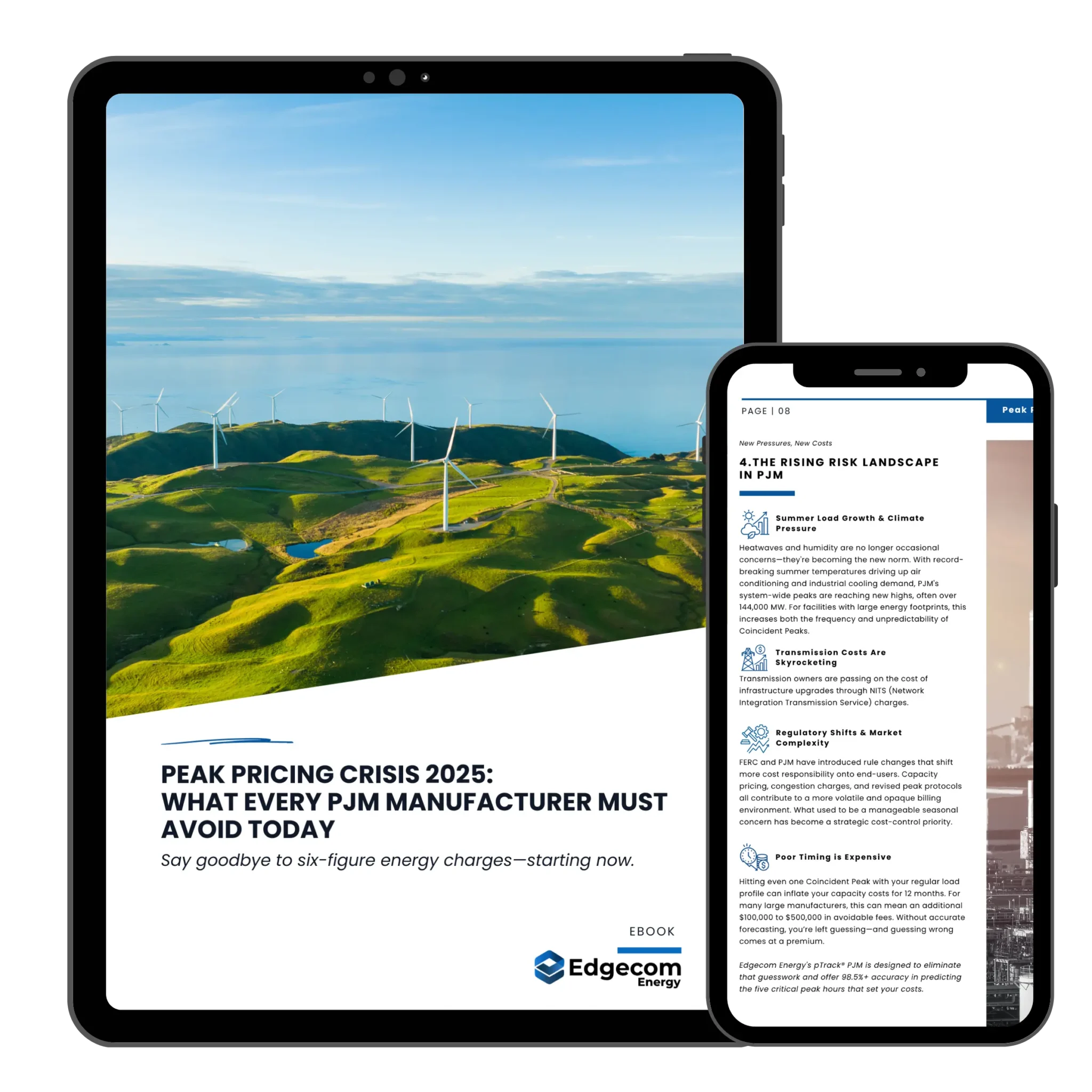As businesses increasingly focus on sustainability, managing energy during peak demand is critical. A Curtailment Plan helps reduce energy consumption and costs while supporting long-term environmental goals, particularly for energy-intensive industries like manufacturing.
What is a Curtailment Plan?
A Curtailment Plan is an end-to-end approach or strategy for moving energy consumption from a period of peak demand when the electricity prices are at their highest. This way, companies avoid exorbitantly high peaks, improve their operational efficiency, and contribute to sustainability in many ways.
Key Components of a Curtailment Plan
1. Identify Peak Demand Periods
The first step is peak demand identification, which happens in extreme weather or during high periods of operational activity. During such times, the grid is extremely stressed, and the electricity rates are highest. Knowing when such peaks occur enables businesses to strategize their energy use to minimize costs.
2. Evaluate Energy Use
After that, the company should look into their energy usage in those periods. To do this, analyze data on which processes or machinery use the most energy and indicate the best opportunities for reduction.
3. Set Curtailment Strategies
Understanding the consumption patterns of energy allows the business to apply curtailment strategies. These can include shifting or adjusting the production schedule, reducing the use of non-essential equipment, or displacing energy-intense operations to off-peak hours. The object is to manage demand loads without adverse impacts on overall productivity.
4. Engage Key Stakeholders
A successful curtailment plan requires buy-in from relevant departments, like sustainability managers and operations teams, down to leadership. Collaboration ensures that efforts to curtail align with larger sustainability and financial goals.
Best Practices for Implementing a Curtailment Plan
- Adjust Production Schedules
One of the most viable curtailment strategies involves shifting production schedules, especially during peak periods. This may involve shifting non-essential tasks to off-peak hours to reduce energy costs without necessarily losing efficiency. - Shut Down Non-Essential Equipment
Identify equipment or machinery that can be powered down during peak periods without affecting operations. This simple step alone can greatly lower energy usage. - Leverage Backup Power Sources
Using backup power through batteries or generators during peak times of the day allows businesses to continue with operations independent of the grid during peak hours of electricity prices.
The Role of Data-Driven Solutions
Real-time data analytics play a crucial role in the success of the plan. Tools like pTrack® give businesses visibility into real-time energy demand on the grid, and products such as dataTrack™ allow you to view concurrent real-time facility consumption. With these tools, it becomes easier to identify curtailment opportunities, enabling them to adjust strategies.
Monitoring and Evaluating the Curtailment Plan Performance
By their very nature, curtailment action plans are an ongoing process of assessment, audit, and revision. For businesses, the value of a curtailment strategy lies in its periodic review in light of performance and data analytics. The effectiveness of the plan thus enables businesses to make the necessary edits to realize continued savings and efficiencies.
Over time, the effectiveness of the curtailment plan will need to be closely monitored as energy needs and operational dynamics change. Strategies must be updated to reflect changing business goals and sustainability aims.
The Value of a Curtailment Plan
In today’s environment, where energy prices continue to rise and sustainability is a crucial focus, implementing a well-structured curtailment plan is critical for reducing costs, improving operational efficiency, and meeting environmental targets. A strong plan positions businesses to proactively manage energy consumption during peak periods, avoiding unnecessary expenses and supporting broader sustainability goals.
Ready to take the next step?
Contact Edgecom Energy today to learn how our tools and expertise can help you build an effective Curtailment Plan tailored to your business needs.

